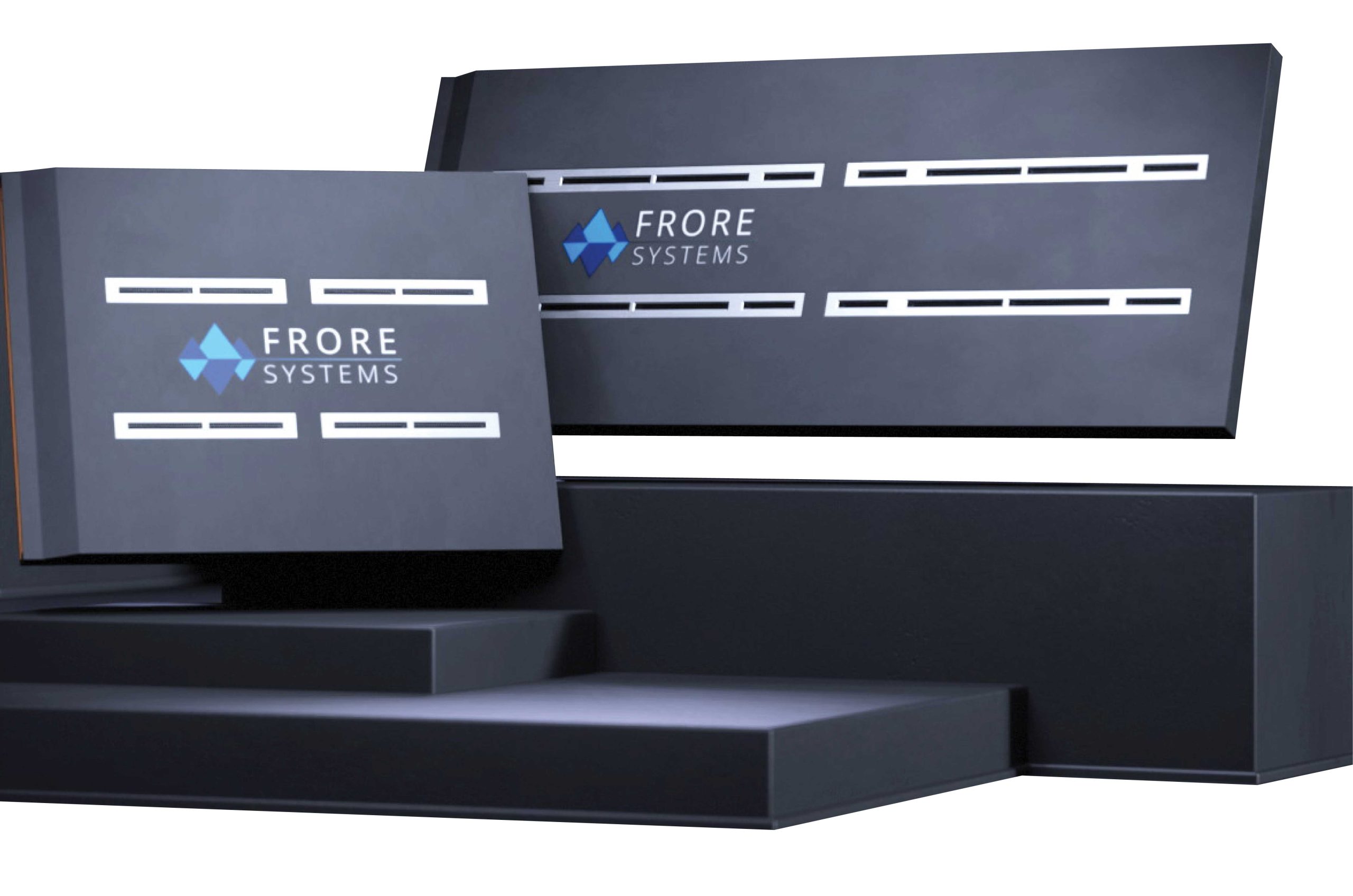A new fanless, solid-state cooling technology could revolutionise laptop performance and form factor.
For several years, typical laptop cooling systems have been composed of a heatsink made of copper, some heat pipes, and a handful of low-powered fans. While some higher-end laptops now have advanced cooling methods that use vapour chambers, coolants, and exhaust units, these are typically power intensive and still require fans that can get rather loud. But, the latest entry into the laptop cooling segment could potentially take performance, design, form factor and efficiency to new heights.
THE AIRJET
Frore Systems, a developer of breakthrough thermal technology for consumer devices, unveiled their latest creation, AirJet, at the Consumer Electronics Show 2023 (CES 2023). AirJet utilises a solid-state active cooling mechanism to carry heat away from laptop components without the need for fans. While solid-state cooling has been around for a while, this is the first time a company has been able to scale it down to fit inside a laptop.
Source: PC World
In an interview with the global computer magazine PCWorld, the CEO of Frore, Seshu Madhavapeddy explained, “Heat has become the biggest bottleneck in computing. The latest processors promise higher performance, but only 50% or less is realised in devices. While processors continue to advance and generate more heat, thermal solutions have not kept pace.” Technically, it is not impossible to design a thermal solution that lets processors utilise their full potential, but their size and weight would render them practically useless. This is why Frore’s breakthrough in solid-state active cooling has gotten engineers so excited.
Frore Systems, a developer of breakthrough thermal technology for consumer devices, unveiled their latest creation, AirJet, at the Consumer Electronics Show 2023 (CES 2023). AirJet utilises a solid-state active cooling mechanism to carry heat away from laptop components without the need for fans.
The AirJet is only 2.8 millimetres thick, which makes it around 70% thinner than the typical internal laptop cooling fan. Two sizes have been designed – the AirJet Mini and the AirJet Pro. The Mini’s dimensions are 41.5 x 27.5 x2.8 mm and can dissipate up to 5.25 Watts of heat. The Pro is 71.5 x 31.5 x 2.8mm with a heat dissipation capacity of 10.5 Watts. A web document published by Frore Systems provides additional specifications of the Pro. It weighs 22g, has a maximum power consumption of 1.75W, and at full capacity, emits only 24 A-weighted decibels (dBA) of noise.
HOW IT WORKS
The working mechanism is based on suction, heat exchange and discharge. Membranes inside the AirJet vibrate at tens of microns of amplitude which creates a back pressure inside the chip, sucking cold air in from the top. The air then gets pushed down to the bottom where it strikes a copper heat spreader at 200 km/h. This process happens several times a second, which creates a constant pulsating jet intake of cold air. The cold air extracts heat from the copper and is discharged through exhaust vents. All this means laptop original equipment manufacturers (OEM) can place AirJet chips directly in contact with components that get hot and leave only a few millimetres of headspace to achieve very efficient cooling.
Source: Frore Systems website
Existing AirJet chipsets are designed for units with a thermal design power (TDP) lower than or equal to 28 Watts. Frore recommends using four Minis or two Pros for maximum heat dissipation. Frore engineers are currently working on making their chipsets more efficient to work with higher-powered central processing units (CPU), graphics processing units (GPU) and SSDs.
PROS AND CONS
Since Frore Systems has not yet put the AirJet in a commercial laptop, it is difficult to compare its performance to laptop cooling benchmarks. The pros and cons are therefore speculations at the moment, but they come from industry experts, insiders and enthusiasts and provide a window into solid-state active cooling’s prospects and pitfalls.
The first advantage is its size. Because it is so thin, laptops would be able to achieve narrower profiles by needing only 50% to 70% of vertical space that previously had to be allocated to internal cooling fans. This would bring down the overall material cost needed to construct the chassis, as well as make laptops more lightweight and portable.
Frore also claims that the high back pressure inside the AirJet makes it possible to put materials with an Ingress Protection rating of 68 (IP68) on the air intakes making it completely waterproof and dustproof. Effectively, this could eliminate dust accumulation inside the laptop. Seshu Madhavapeddy, the CEO of Frore, explained that typical laptops have inlet vents at the bottom and stacks on the corners for air to go up through the vents. Dust gets through these vents and deposits inside. Madhavepddy added, “We completely eliminate that problem because, in our case, you don’t need to have any vents at the bottom.”
A definite advantage of using AirJet’s solid-state active cooling would be in increasing the longevity of the laptop. Today’s processors operate at extremely fast speeds and reach very high temperatures in an instant. Even with performance throttling fail-safes, the longer a laptop runs at high temperatures, the shorter its lifespan gets. AirJet’s ten times more effective heat dissipation capacity will undoubtedly keep processors cooler, increasing both performance and lifespan. Frore Systems has also ensured that the AirJet is more durable than current laptop fans, but without independent third-party testing, it is a difficult claim to verify.
For the laptop industry to switch to a new cooling system will have some hurdles along the way, the most obvious of which is the hike in price; at least in the short run before Frore systems can achieve economies of scale through collaborations with OEMs. But even if AirJets become cheaper to produce, their repairability will not be as easy, if not impossible, as repairing traditional fans. Because cooling fans are a mechanical system, anyone with a user guide or a manual could potentially repair a broken one at home with some basic tools. However, the AirJet, a solid-state device, is likely going to need specialised gear and equipment accessible at labs or workshops only. Frore will have to play the cards right and make repair guides open source information, or otherwise, risk facing backlash for making closed-system components that increase repair and maintenance cost borne by consumers.
PERFORMANCE
Frore tested the AirJet Mini on 13” fanless notebooks and the Pro on 15” premium notebooks that use fans. The 13” fanless notebooks were 11mm thick and were limited to 10 Watts of sustained processor power. Frore combined 4 AirJet minis and was able to support a sustained processor power of 20 Watts at only 27 dBA noise level, doubling processor performance.
Membranes inside the AirJet vibrate at tens of microns of amplitude which creates a back pressure inside the chip, sucking cold air in from the top. The air then gets pushed down to the bottom where it strikes a copper heat spreader at 200 km/h.
The premium 15” notebooks were 12mm thick and were thermally limited to 18 Watts of sustained processor power at a noise level of 42 dBA. By using 3 AirJet Pros, Frore was able to increase the sustained processor power to 28 Watts, at 29 dBA noise level. This improved the laptop’s performance by 1.5 times.
IMPLICATIONS
It is unlikely that the laptop cooling industry will be entirely revolutionised because of solid-state active cooling, but Frore Systems has set things in motion to bring about a slow and steady change in innovation. The natural step forward is to collaborate with OEMs to introduce AirJet into the market, and analyse consumer response.
Intel has already set things in motion, with plans to install AirJets in future laptops in the Evo lineup. In a press release, Josh Newman, Intel VP and GM of mobile platforms stated, “Intel’s mission with Intel Evo is to unite the open PC ecosystem to deliver the best possible laptop experiences that people want. Engineering thin, light, stylish laptop designs that offer great performance while remaining cool and quiet is foundational to that mission,” With regards to how solid-state active cooling will help realise that vision, the GM said, “Frore Systems’ Airjet technology offers a new and novel approach to help achieve these design goals in new ways.”
Once AirJet-equipped slim laptops hit the shelves, consumer reception would indicate whether the new cooling technology, reduced noise level, better portability, and low repairability are worth the increased price point. However, the feedback at such an early stage would be from first adopters and tech enthusiasts who are generally in favour of new technology, so it would likely be difficult to gauge whether solid-state active cooling is indeed the future. Its success would depend on how well it penetrates the 15.0” – 16.9” segment which owns the highest market share with a current compound annual growth rate of 3.9%. Nonetheless, Madhavapeddy is optimistic about the future and believes this is the next revolution in breaking the performance ceiling. If the conditions are right and Frore Systems is able to strategise a timely market entry, capitalise on advertising that excites consumers, and pursue further collaborations with major OEMs to facilitate investments in research and development, then AirJet will be soaring to success at full throttle.


















